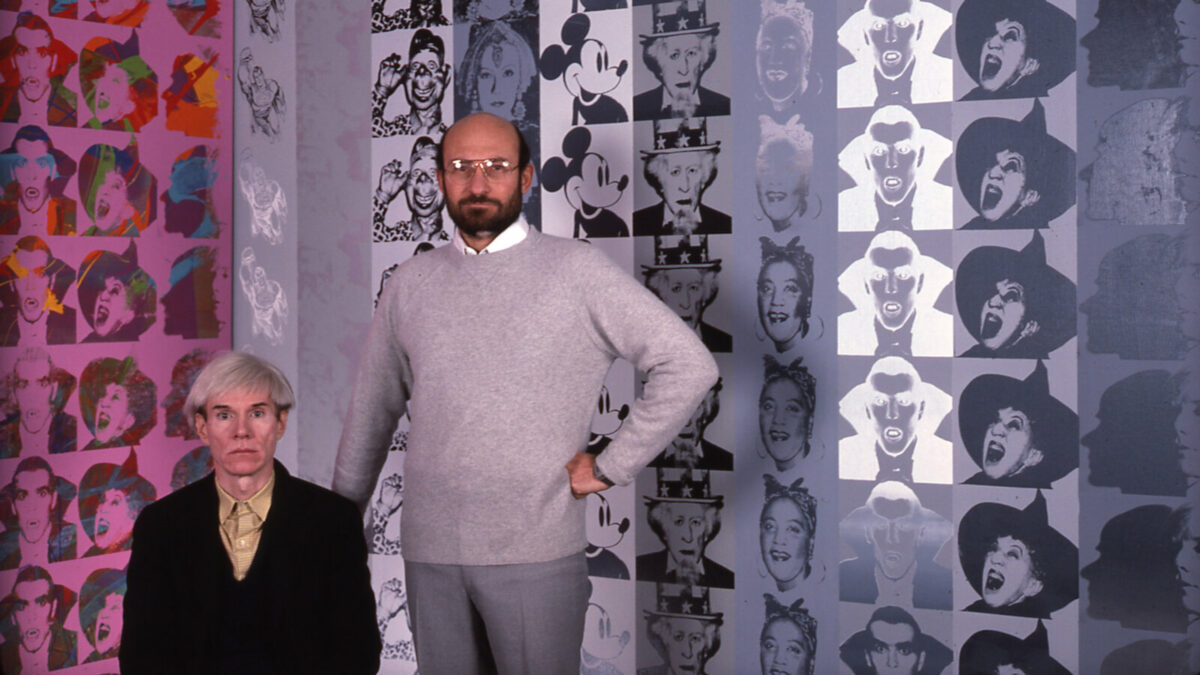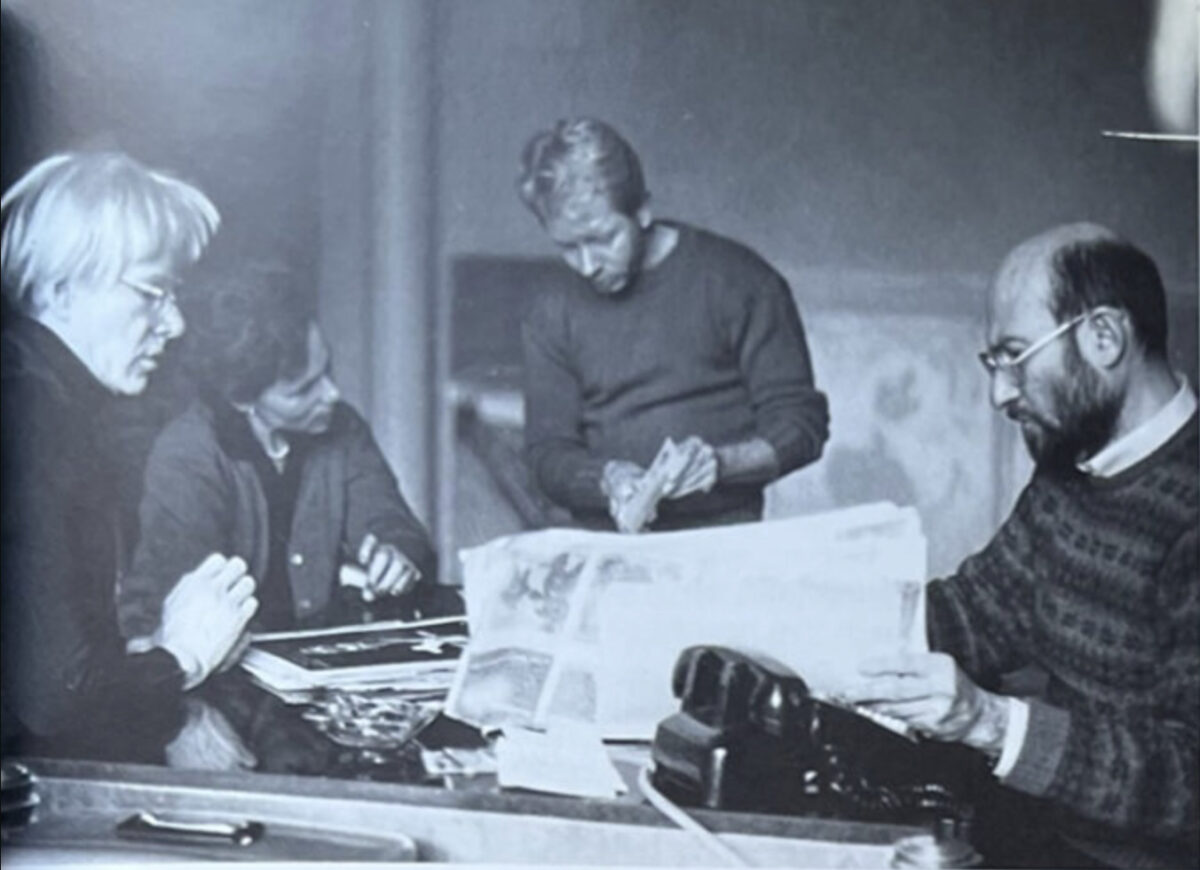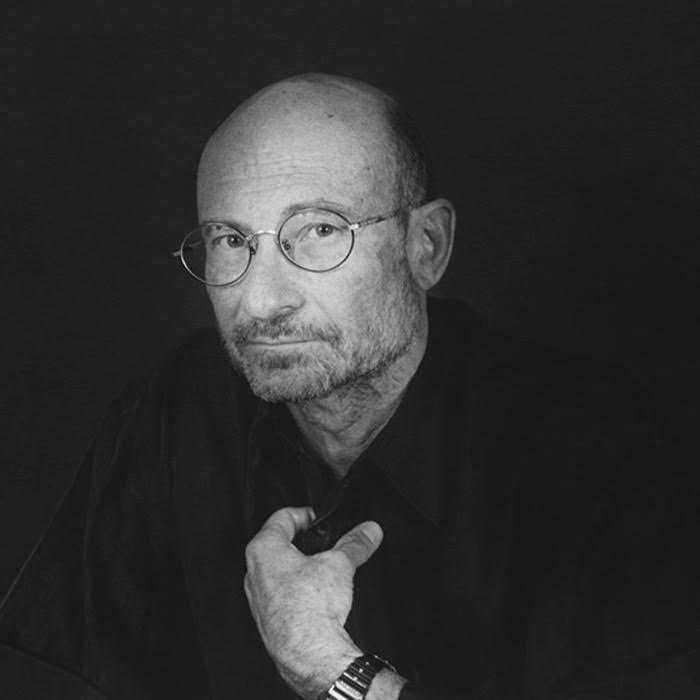by Reagan Carraway

The Ronald Feldman Gallery has lost its father and namesake, dare-devil art dealer and avid socio-political activist Ronald Feldman at the age of 84. Feldman played an integral part in producing and publishing 54 of Andy Warhol’s most esteemed and highly recognizable works of art in the 1980s.
Feldman died peacefully on December 20, 2022 in his New York home, according to the statement released by the gallery. His passing comes shortly after handing the reins to his eldest son, Mark, in 2019 due to health reasons.
For almost 50 years, Feldman carried the torch for multi-hyphenate conceptual artists to showcase works with unprecedented styles, taking in many whose works intimidated other gallerists as well as the public. “Ron spoke the language of art and believed in its power to convey timeless messages and spiritual truths,” read the gallery’s January 2nd announcement. Feldman’s philosophy helped advance an epoch of modern art that flipped the long-held power of the high-art critic into the hands of the artists and the messages themselves.
Born in the Bronx to a pharmaceutical company president in 1938, Ira Ronald Feldman first set out to become a corporate lawyer. Feldman graduated with degrees from Syracuse University and New York University and made partner at the firm of Helfland, Lesser & Moriber, but found that something in him was unsatisfied. His heart was in art. In 1971, he and his wife Frayda opened their soon-to-be trailblazing gallery, which at that time was known as Feldman Fine Arts.
It was much more than Feldman’s knack for business that made him an excellent art dealer. Feldman’s core convictions allowed him to connect with creators in a uniquely personal way. In a 2019 interview with the New York Times, Mark Feldman said of his father, “It was really about the artists and the work. He didn’t necessarily want to be a part of their story; he wanted to be a part of their journey.”
The Ronald Feldman Gallery housed women’s liberation visionary Hannah Wilke in her first solo show, Mierle Ukeles, who holds the title “Artist in Residence” at the New York Department of Sanitation, and Chris Burden, psychological-art revolutionary. It was Feldman’s encouragement that led artist and arts education advocate Joseph Beuys—who would become a prominent subject in Warhol’s works—to visit America for the first time after boycotting as a demonstration against the Vietnam War. Feldman helped organize a campaign of lectures and exhibitions for Beuys—all of this within the first ten years of the gallery’s establishment.
Recently, Ronald Feldman’s gallery has exhibited the works of Pepon Osorio, Cassils, Bruce Pearson, Shih Chieh Huang, and of course, Andy Warhol, as recently as 2019.

Before their 1982 Soho relocation, The Ronald Feldman Gallery was set up on East 74th Street in the exact same location of Eleanor Ward’s Stable Gallery, where Warhol famously shows his Dollar Bills, Coke Bottle, Campbell’s Soup Cans, and Marilyn Diptych. “Life has a lot of luck in it,” Feldman said in a 2010 interview. But Warhol and Feldman’s meeting was only the beginning of their luck together. As they formed a friendship (which included Warhol’s dachshund, Archie), Warhol regularly asked Feldman for new ideas, as he was wont to do. “[One day] I called his studio and Fred Hughes was there,” Feldman remembers. “I said I have an idea for Andy. It will give him the chance to make portraits of really famous people… Ten Portraits of Jews of the Twentieth Century.”
And that was that. In addition to Ten Portraits, Feldman commissioned Myths, Ads, and Endangered Species, as well as Moonwalk (the latter representing the beginnings of a larger series meant to document the greatest moments in television). The gallery also published Andy Warhol Prints: A Catalogue Raisonné 1962-1987, co-edited by Ron’s wife Frayda. The catalogue raisonné has since expanded into four editions that now include over 1,700 print and illustrative works spanning Warhol’s entire career. As the ultimate reference material, the publication stands as the authority for all cataloging information on Warhol’s massive body of print works.
Feldman’s influence was as far reaching into the political and educational stratosphere as it was in the artistic realm. During Bill Clinton’s presidency, Feldman was appointed to the National Endowment for the Arts Council by the president himself, serving for five years. A generous philanthropist and community member, Feldman acted as a board member of The New School’s Vera List Center for Art and Politics, People for the American Way, and the Art Dealers Association of America. Feldman also was a founding member of the Board of Directors for Creative Capital, an NYC nonprofit focused on providing artists with a skill set for career longevity and funded largely by The Andy Warhol Foundation for the Visual Arts.
A mentor for groundbreaking artists, a fierce protector of artistic freedom, and a devout believer in art for social change, Ronald Feldman reformed the doctrine that art is just meant to be pretty. Along with the many artists he inspired, Feldman is survived by his wife, children, and grandchildren. Our hearts are with them.


